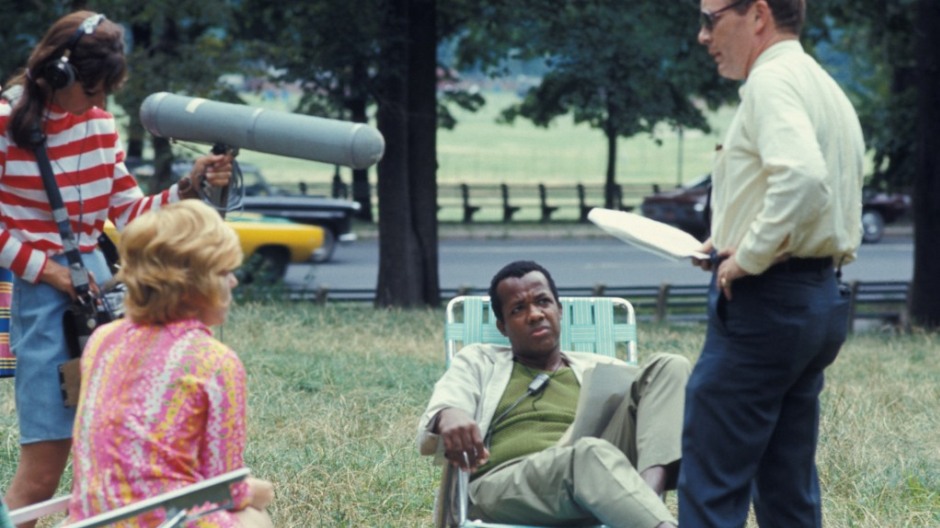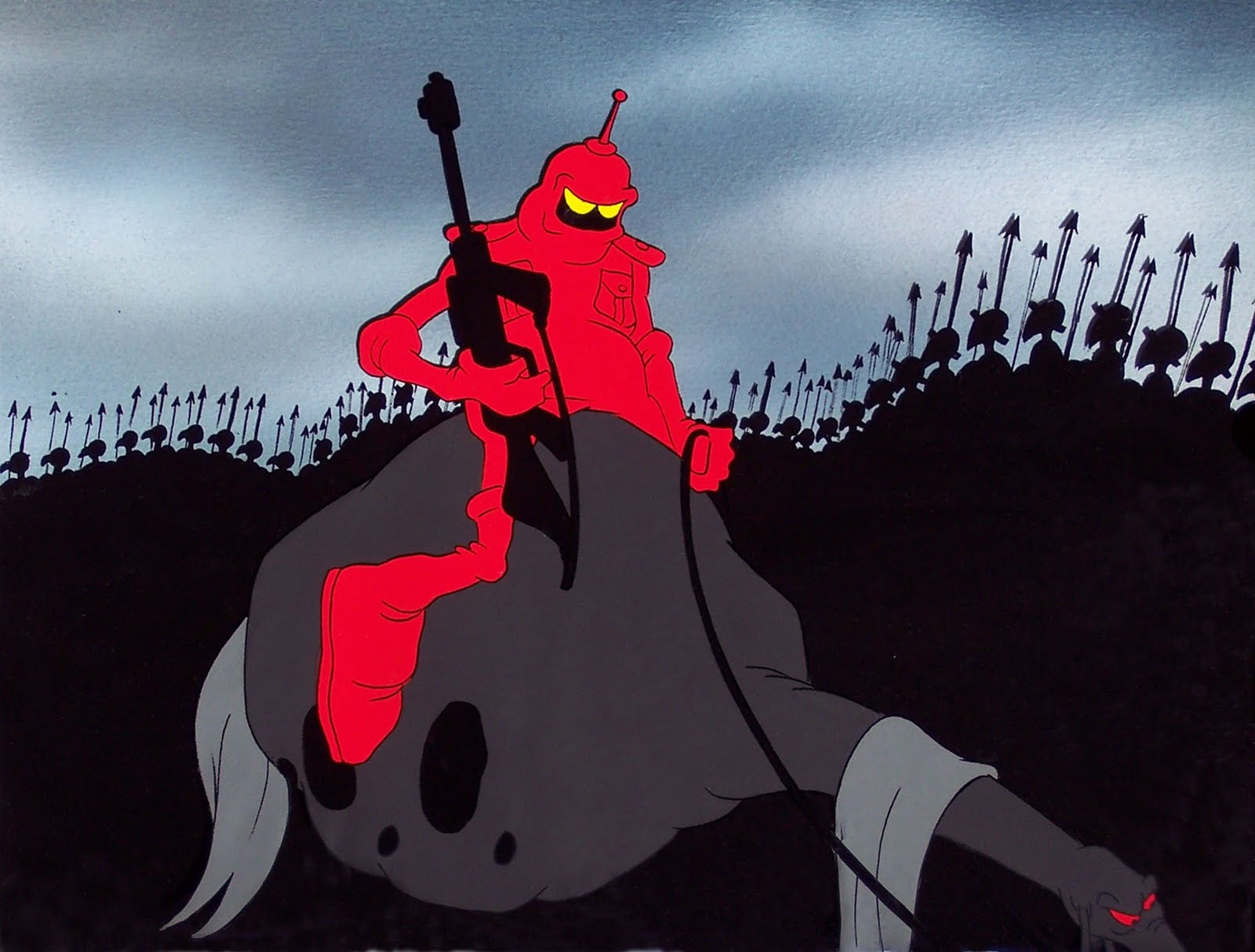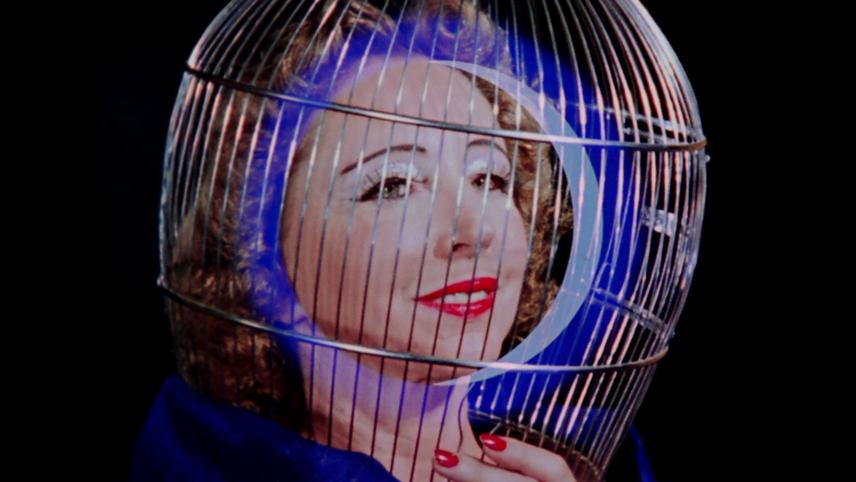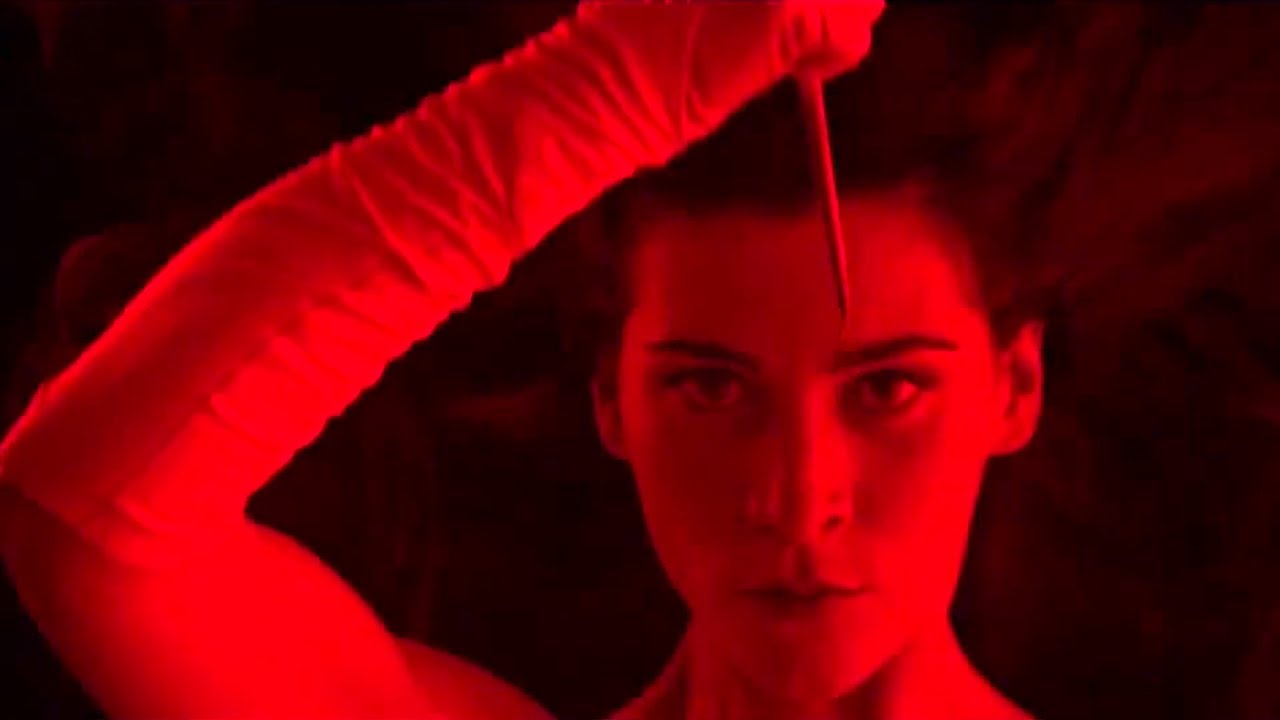Er was een tijd dat ik schreef voor de internationale cinephile website ‘Taste of Cinema.’ Een website met een gigantisch bereik, waar ik de kans kreeg om mijn film meningen de wereld in te gooien in de vorm van top 10 lijstjes. Nu is het al een hele tijd geleden dat ik de laatste schreef, maar ik kan het niet laten om er een aantal waar ik toendertijd erg tevreden mee was opnieuw te delen. Zie hier in het Engels geschreven een van deze top 10 lijstjes.
De andere twee vind je hier: 10 great spaghetti westerns, 10 great fantasy films.
De andere twee vind je hier: 10 great spaghetti westerns, 10 great fantasy films.
10 Great Surrealist Films
(you’ve probably never seen)

Surrealist cinema came to life in the 1920s in the birth-country of many milestones in cinematic history: France. The surrealist movement is characterized by heavy use of symbolism, often in the form of absurd imagery. A surrealist film doesn’t have to be absurd or shocking though, it can just as well be an opposition to the standardized dramatic structure. In this list we will see a fair share of shock and absurdity, but there will be some films that are considered surreal thanks to their structure.
Every country seems to have their own odd-ones-out, throwing the rules of filmmaking out of the window and instead doing whatever they want to do. The USA has David Lynch, France has Jean Cocteau, Chile has Alejandro Jodorowsky, the Netherlands has Alex van Warmerdam, and the UK has Terry Gilliam. And all of these are just the prominent surrealist filmmakers that aren’t represented in this list. Instead we will visit Asia, Europe, and the Americas for some of the lesser known filmmakers or in some cases some lesser known film from a prominent figure in the world of surrealist cinema. Without any further ado, here are 10 surrealist film you’ve probably never seen.
Every country seems to have their own odd-ones-out, throwing the rules of filmmaking out of the window and instead doing whatever they want to do. The USA has David Lynch, France has Jean Cocteau, Chile has Alejandro Jodorowsky, the Netherlands has Alex van Warmerdam, and the UK has Terry Gilliam. And all of these are just the prominent surrealist filmmakers that aren’t represented in this list. Instead we will visit Asia, Europe, and the Americas for some of the lesser known filmmakers or in some cases some lesser known film from a prominent figure in the world of surrealist cinema. Without any further ado, here are 10 surrealist film you’ve probably never seen.
1. Conspirators of Pleasure (1996)

All Jan Svankmajer’s strangest sexual fantasies come together in Conspirators of Pleasure. The story follows six regular folks, each indulging in a not so regular fetish. The individuals all come across each other in one way or another. A TV news reader has a fantasy involving carp, while her husband steals all kinds of materials to rub against himself. A shop clerk builds an elaborate massaging machine, while one of his customers is building a voodoo-like chicken costume resembling his neighbor and, in her turn, the neighbor has a doll that resembles him. That only leaves a letter carrier that gets a kick out of doing some grotesque things with little dough balls.
Jan Svankmajer is an influence to many prominent directors. Terry Gilliam, the Quay Brothers, Tim Burton, and Edgar Wright all expressed themselves more than positively over the stop-motion works of Svankmajer. Conspirators of Pleasure is just one of the many great films from his hands. Most of them are brilliant shorts, but there are plenty Svankmajer features to be explored as well. Alice, Faust, and Little Otik all are well worth your time as well.
2. Symbiopsychotaxiplasm: Take One (1968)

In the introduction to this article we talked about surrealist cinema not being exclusively absurd cinema. The intricately-title Symbiopsychotaxiplasm is a prime example of this; a surrealist film without absurd imagery or shock-value. This is one of these films that is surreal in structure.
In Central Park, New York City, director William Greaves has three film crews to his disposal. The first crew is instructed to document a cast of actors in their audition process. The second crew is instructed to document this first film crew. The third crew is instructed to document whatever fits into the documentary’s overarching theme: Sexuality.
The result of these three different documentations are interesting to say the least. Since Greaves left all of his crew in the dark from his real intentions with the film, it becomes an interesting experiment; a real-life character study. When the film crew starts questioning the competence of Greaves this of course is documented as well and shown in the film, adding so many new layers. It’s one of the most complex pieces of meta-cinema, but so easy to digest. Greaves his goal with Symbiopsychotaxiplasm was to capture life and reality as it is, coming from a dissatisfaction with Hollywood acting. Not only was this goal reached, it turned out to become one of the most brilliant meta-documentaries along the way.
3. Wizards (1977)

Back to absurdity, Ralph Bakshi’s Wizards is a prime example of the bizarre-imagery-filled surrealist cinema. In Wizards the evil mutant wizard Blackwolf wants to the claim the throne of his dead mother by using some lost military technologies. His twin brother, the sage Avatar and his team want to defeat Blackwolf and his forces to stop them from overtaking their world. The story is classic in nature, but the post-apocalyptic setting and absurd stylistic choices and imagery make it a great unique animation film.
Ralph Bakshi is a great visionary director. His adult animation films like Wizards, Fritz the Cat and The Lord of the Rings are all unique works of art, each highly overlooked and underrated. Bakshi is a director that deserves tons more praise for his work, Wizards very much included. With Wizards Bakshi switches between different animation techniques and treats us to beautiful psychedelic and impressionistic imagery, all the while telling a politically charged story. Wizards and all of Bakshi’s work is very much due to obtaining the cult following they deserve.
4. Magick Lantern Cycle (2009)

This entry isn’t a film, but rather a collection of films. The British Film Institute made this compilation of 9 of Kenneth Anger his shorts after UCLA’s Film & Television Archive and The Film Foundation did some restoration on the original material. Rather than using this entry for just one Anger short, this compilation serves as a great stand-in that, if you’re not familiar with him yet, can introduce you to one of the most prominent underground experimental filmmakers of the US. Magick Lantern Cycle consists of Fireworks, Puce Moment, the extended version of Rabbit’s Moon, Eaux d’Artifice, Inauguration of the Pleasure Dome, Scorpio Rising, Kustom Kar Kommandos, Invocation of My Demon Brother, and Lucifer Rising.
Kenneth Anger has exclusively directed short films; around 40 since his debut in the 1930s. Many of his films take a surrealist approach and merge the themes homoeroticism and the occult. As one of the first openly gay filmmakers in the US, Anger had a big impact in the discussion of acceptance during the middle of the 20th century. His works should be celebrated for that, but not only that; his surrealist approach in both imagery and use of music, make his films not only culturally important, but also a blast to watch.
5. La Grande Bouffe (1973)
 Four bourgeoisie friends consisting of a chef, a pilot, a tv producer and a magistrate, gather for a weekend at the latter his villa in Paris. Here the men await trucks filled with food and wine and they prepare a grand feast. Three prostitutes join the company for the feast that gradually turns macabre when the goal of the feast is made clear; eating themselves to death.
Four bourgeoisie friends consisting of a chef, a pilot, a tv producer and a magistrate, gather for a weekend at the latter his villa in Paris. Here the men await trucks filled with food and wine and they prepare a grand feast. Three prostitutes join the company for the feast that gradually turns macabre when the goal of the feast is made clear; eating themselves to death.In La Grande Bouffe, or La Grande Abbuffata, director Marco Ferreri satirizes the bourgeoisie and the consumerism economy. At its release it was controversial for this reason, but since then it has gained cult status. Its controversy is still understandable and this film won’t be for anyone, since it’s filled with the grotesque results of vanity including sex with whores, feces and vomit. This is still nothing, though, compared with an entry in this list following shortly! Le Grande Bouffe is timider, focusing more on satirizing the themes. For this reason, it’s recommended as an easy entry in the subgenre of grotesque surrealism.
6. The Seashell and the Clergyman (1928)

This historic entry doesn’t really have much of a story to dissect. As with so many surrealist films, it doesn’t have a structural plot, but rather follows a set of strange visions of the titular Clergyman.
Many consider Luis Buñuel and Salvador Dali their film ‘Un Chien Andalou’ to be the first surrealist film, but even though that one is highly influential, it sadly overshadows The Seashell and the Clergyman which inspired Buñuel and Dali in using many similar filmmaking techniques. You could say this entry is the earliest surrealist film, but another, even older, entry a bit down this list begs to differ; as do many other films. Surrealism is something from all times, so it’s hard to pinpoint which filmmaker incorporated the style first.
What we do know for sure, is that, similar to Un Chien Andalou, Germaine Dulac’s 40-minute long surreal film is a highly influential one. For this reason, it’s a shame that not more people have had the pleasure experiencing it. Often, when talking about female surrealist-filmmakers, Maya Deren is the one that pops too mind first, but Germaine Dulac deserves just as much or arguably even more attention. The Seashell and the Clergyman is a great entry point in her intriguing filmography.
7. Sweet Movie (1974)

Sweet Movie follows two storylines. The first starts as Miss Canada wins the Miss World Virginity contest of 1984 and is awarded a marriage with a wealthy tycoon of the milk industry. On their honeymoon she realizes this marriage is not for her and she escapes her eccentric new husband and leaves to Paris. In Paris she becomes obsessed with El Macho, a Latin singer, and moves through a community of sodomy.
The second story follows Anna Planeta, a pedophile and killer whom makes candy in her boat on the canals of Amsterdam. She is involved in an affair with the sailor Potemkin as well as with many young boys, which she seduces with her candy.
Sweet Movie created a lot of controversy upon its release and was even banned in many countries and still is banned in some to this day. It seems that Yugoslavian director Dušan Makavejev wanted to search for the boundaries of obscenity in an experiment to push the limits of his audience’s endurance. With lots of trigger warnings in place, it’s a film only recommended for the ones that have the stomach and definitely a pass for the faint-hearted. It has moments of sexualizing things as feces and vomit and there’s implied child molestation, all used as a tool to shock, making the total picture a series of unforeseeable dread that will make you rethink why you started watching it in the first place.
8. The Strange Color of Your Body’s Tears (2013)

Hélène Cattet and Bruno Forzani have proved themselves masters of the genre film in the 21st century. With both their shorts and features like ‘Amer’ and ‘Let the Corpses Tan’ they pay homages to 60’s European genre cinema, most prominently to the Italian Giallo. Their films are heavily stylized and often cryptic in story. You could say their style is a big part of their substance.
In the perfectly titled ‘The Strange Color of Your Body’s Tears’, Dan, your regular businessman, comes home to find his wife missing. He quickly decides to go door to door by his neighbors’ apartments to try and find her. While being unsuccessful, he encounters tons of strange stories from his, sometimes eccentric, neighbors.
The plot, though loosely explained above, is rather non-existent, since Cattet and Forzani decide to focus more on stylization. They rather show than tell and they show a lot. It’s nightmarish, filled with symbolism, and very vague, all in the best possible way. It’s a film you’ll love or hate, but either way it will make you feel something and either way you’ll probably not regret watching it.
9. A Page of Madness (1926)

The newly hired janitor of an insane asylum is there with a double agenda; he wants to safe his wife who is committed to the institution after she attempted suicide.
A Page of Madness was lost for over forty years, before being rediscovered by its director Teinosuke Kinugasa in 1971. Since then the silent film is rereleased with a new score. It’s hard to believe the original film dates back to 1926, since its experimental filmmaking techniques and surrealistic approach were groundbreaking for its time. Kinugasa managed to make a film that perfectly captures one’s descent into madness by use of hallucinations and dreams some incomprehensible and some just horrifying. As many films on this list it excels in giving the audience a visually highly stylized experience that will leave you in awe.
10. Illusion Travels by Streetcar (1954)

We’ve dropped his name a few times in this article already, but an entire slot dedicated to him just felt necessary. Luis Buñuel is one of the most influential surrealistic filmmakers, being there at the birth of surrealist cinema with Un Chien Andalou (although we disputed this already when talking about The Seashell and the Clergyman). Not only did he make Un Chien Andalou, he also made countless more films, many of them surrealistic, that influenced many filmmakers to come. To name a few; The Discreet Charm of the Bourgeoisie, Belle de Jour, The Exterminating Angel, Viridiana and Los Olvidados all came from his brilliant mind.
Illusion Travels by Streetcar is one of the lesser known Buñuel films, but it has everything that a Buñuel film should have, a surrealistic tale and a politically loaded message most importantly. The film follows two municipal transit workers who hear the news of the beloved streetcar no. 133 retiring. With the news in mind they get drunk and decide to take her for a last joy-ride. This ride, however, ends up in a night-and-day long trip on which they encounter plenty of bizarre situations that prevents them from returning the car. Witty and clever and political as every Buñuel, this is one not to forget.